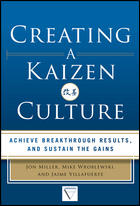Skilled Workers
A Closer Look at the Skills Gap


In today’s increasingly digital manufacturing environment, finding workers with mechanical aptitude and a capacity to adapt to new technological trends has become more and more difficult. Source: U.S. Competitiveness Project


Quality examines just how pervasive this trend is, and what some manufacturers are doing to combat it.
As a Quality reader, you’ve likely heard—or even used—certain industry buzzwords in the past year as you kept pace with the changing manufacturing world. Words like reshoring or onshoring have continued cropping up. So has the phrase skills gap.
Skills gap: When there are manufacturing jobs on the table but not enough workers with the training, education or capabilities to get them.
Evidence of the disparity can be found in job shops throughout the nation (especially in technical capacities), and it’s been substantiated by a 2011 survey of executives by the consulting firm Deloitte, and the Manufacturing Institute. The survey shows that 600,000 manufacturing jobs are currently going unfilled.
These are jobs that don’t require a college degree, necessarily, but they do demand a technical instruction and mechanical aptitude. Not just anyone can weld, or tackle CNC machining, without substantial training. And, unfortunately, very many of those whom can are nearing retirement age.
Take Dorsey, a Poughkeepsie, NY-based manufacturer of precision measuring instruments for aerospace and other industries. The company was recently the subject of a Poughkeepsie Journal story about how hard it is to find workers with the right skills, even in a state like New York, where manufacturing jobs are on the decline. Dorsey’s biggest labor demands include skills such as machining, toolmaking and specialized assembly jobs, and these roles require a solid grasp of math, computers, mechanics, training and experience. They were positions snapped up after World War II, the story explains, and much of those workers are now aging and nearing the end of their careers.
CHANGING WITH THE TIMES
Not only is a retiring workforce an issue, manufacturers are adopting increasingly challenging technologies and processes, says Gary P. Pisano, a professor of business administration at the Harvard Business School. Pisano says the incoming manufacturing work force needs to build an awareness early-on about what kind of manufacturing jobs are now available, and that too often there is “precious little understanding” in what is happening in manufacturing.
“There are more positions opening up in fields such as biotechnology and in semiconductor plants,” Pisano says. “These are not the manufacturing jobs of 30 years go.”
Pisano has joined the Harvard Business School’s research and educational effort called the U.S. Competitiveness Project, a call to arms for communities and business across the United States to build awareness and take action to build U.S. competitiveness. The project maintains that since U.S. companies have been outsourcing manufacturing in the belief that it held no competitive advantage, we have lost our “industrial commons” or, that is, the cooperative operational means to create new product and process development in the U.S. industrial sector. The tragedy here, the project suggests, is that as we’ve misplaced our edge on innovation, we have lost out on a generation of workers with the skills and ideas to push us ahead in an increasingly global economy.
“The world has added a billion people to global workforce since 1990,” Pisano explains. “If you’re an American worker, you face a lot more competition nowadays. How do you differentiate yourself? You’ve got to be capable of doing things others can’t do. If you just do the basic math of what’s happened to the economic environment, it’s clear that the U.S. worker has got to be capable of doing things others can’t do.”
DEFINING THE SKILLS GAP
While no one is contesting that a skills gap exists, new data suggests that it may not be as sizeable as previously thought. In mid-October, the Boston Consulting Group (BCG) purported that the skills gap isn’t so dire, affecting only 80,000 to 100,000 jobs.
To recognize where skills gaps exist in the United States, BCG used wage data and manufacturing-job vacancy rates to assess areas where wage growth has exceeded inflation by at least 3 percentage points annually for five years. “Wage growth is a widely accepted indicator of skills shortages in other sectors, such as energy; it reveals where employers have been forced to bid up pay to attract hard-to-find workers,” BCG says. By BCG’s designation, just five of the country’s 50 biggest manufacturing towns—Baton Rouge, Charlotte, Miami, San Antonio and Wichita—suffer significantly from skills gaps. The positions most in demand here are welders, machinists and industrial-machinery mechanics.
The analysis also uses a 2012 study of more than 100 U.S.-based manufacturing executives at companies with annual sales of $1 billion or higher. “The findings underscore the idea that worries of a skills gap crisis are overblown,” BCG notes. “Thirty-seven percent of respondents whose companies had shifted manufacturing to the U.S. from another country cited “better access to skilled workforce or talent” as a strong factor in their decision. Only 8%, one-fifth as many, cited this as a reason for moving production out of the U.S.”
Mike Zinser, a co-author of the research, says the disparities in data come down to how we define highly skilled workers. Past research has grouped these workers in with those whose jobs are part of direct production, Zinser says, where the BCG’s research refers to skilled workers as those with more technical capabilities. The research does show the same age gap problem that companies like Dorsey face, however. According to the BCG, the average U.S. high-skilled manufacturing worker is 56 years old.
“Based on U.S. Bureau of Labor Statistics and BCG estimates, the shortage of highly skilled manufacturing workers could worsen to approximately 875,000 machinists, welders, industrial-machinery mechanics and industry engineers by 2020,” the BCG states.
IT COMES DOWN TO EDUCATION
No matter what data you’re looking at, all parties agree that manufacturers and schools must put a premium on training. Several prominent manufacturers have already begun partnering with community colleges to get a head start. Programs such as Quick Start offer free tailored workforce training and retraining, in partnership with technical colleges across Georgia, for companies such as NCR and Caterpillar. To qualify, companies have to create 15 similar jobs within a year.
The Austin Polytechnical Academy coaches students on a range of industry tools and has its own manufacturing training center. It has partnered with 65 organizations, including WaterSaver Faucet, Johnson Controls, S&C Electric and Atlas Tool & Die.
The government also has hopped on board, and the federal Trade Adjustment Assistance Community College and Career Training Grants Program has helped schools to work with businesses to create programs to fill specific needs in manufacturing.
Mark Netzel, director of quality at J.B. Stamping Inc. in Brooklyn, OH, has worked in manufacturing for more than 20 years and advises any new manufacturing recruits to be adaptable and educated.
“Be willing to go to a trade or technical school to educate yourself in the area that you want to pursue (CNC, machine trades), as well as blueprint reading, GD&T and problem solving courses,” Netzel notes. “ I am amazed at how many do not know how to do this, and these skills alone make someone more attractive for hire.”
Looking for a reprint of this article?
From high-res PDFs to custom plaques, order your copy today!










